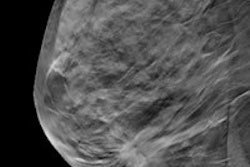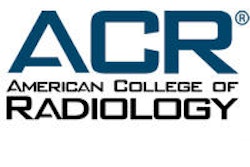In community practice, digital breast tomosynthesis (DBT) performed better than conventional 2D mammography, reducing recall rates, increasing overall cancer detection, and increasing the detection of invasive cancer, according to research published online June 11 in the American Journal of Roentgenology.
Dr. Julianne Greenberg, of Washington Radiology Assoc., and colleagues compared the clinical performance of DBT and 2D full-field digital mammography (FFDM) in the multisite practice's screening program. They found a 43.8% increase in the detection rate for invasive cancer for patients who were screened with DBT instead of FFDM.
"As early adopters of 3D DBT in community-based practice, we aimed to retrospectively compare the clinical performance of 3D DBT ... with conventional 2D [FFDM] alone in a high-volume population-based breast cancer screening program," Greenberg and colleagues wrote (AJR, June 11, 2014).
The study included patients who underwent screening at the practice between August 2011 and November 2012. Of 77,833 women screened, 23,149 chose DBT and 54,684 chose FFDM. As DBT was installed throughout the practice's six offices through March 2012, patients initially received DBT at no charge during a training period and then for a $50 fee thereafter. (Women who could not afford this fee were not charged, the authors noted.)
While 24 radiologists interpreted studies, 10 read relatively few DBT exams. Therefore, the researchers only included data from the 14 radiologists who interpreted more than 500 screening mammography DBT studies during the study period. This resulted in an FFDM group of 38,674 and a DBT group of 20,943.
Of the 38,674 patients screened with FFDM, 6,247 were recalled for additional imaging, for a recall rate of 16.2%, while 2,845 of 20,943 patients screened with DBT were recalled, for a rate of 13.6%. Cancer detection and positive predictive value (PPV) for recalls were higher with DBT than conventional mammography.
| DBT vs. FFDM for screening mammography | |||
| DBT | FFDM | Difference | |
| Overall cancer detection rate (per 1,000 women) | 6.3 | 4.9 | 28.6% |
| Invasive cancer detection rate (per 1,000 women) | 4.6 | 3.2 | 43.8% |
| PPV for recalls from screening | 4.6% | 3% | 53.3% |
There was no significant difference in PPV for biopsy, at 22.8% for DBT and 23.8% for FFDM.
The women who underwent DBT also had fewer additional mammographic views, according to Greenberg and colleagues. For screening recalls resulting in cancer diagnoses, 74.1% of DBT patients underwent two or fewer mammographic views, compared with 51% of FFDM patients. In addition, 35.1% of patients in the DBT group required no additional mammographic views, compared with 6.3% in the FFDM group.
"Our results show that screening with 3D DBT is efficacious and has practical implications for patient care," they wrote. "A decreased probability of recall from screening, a higher rate of cancer detection, and a greater likelihood that fewer mammographic views will be needed to diagnose malignant lesions will significantly influence everyday practice."



















